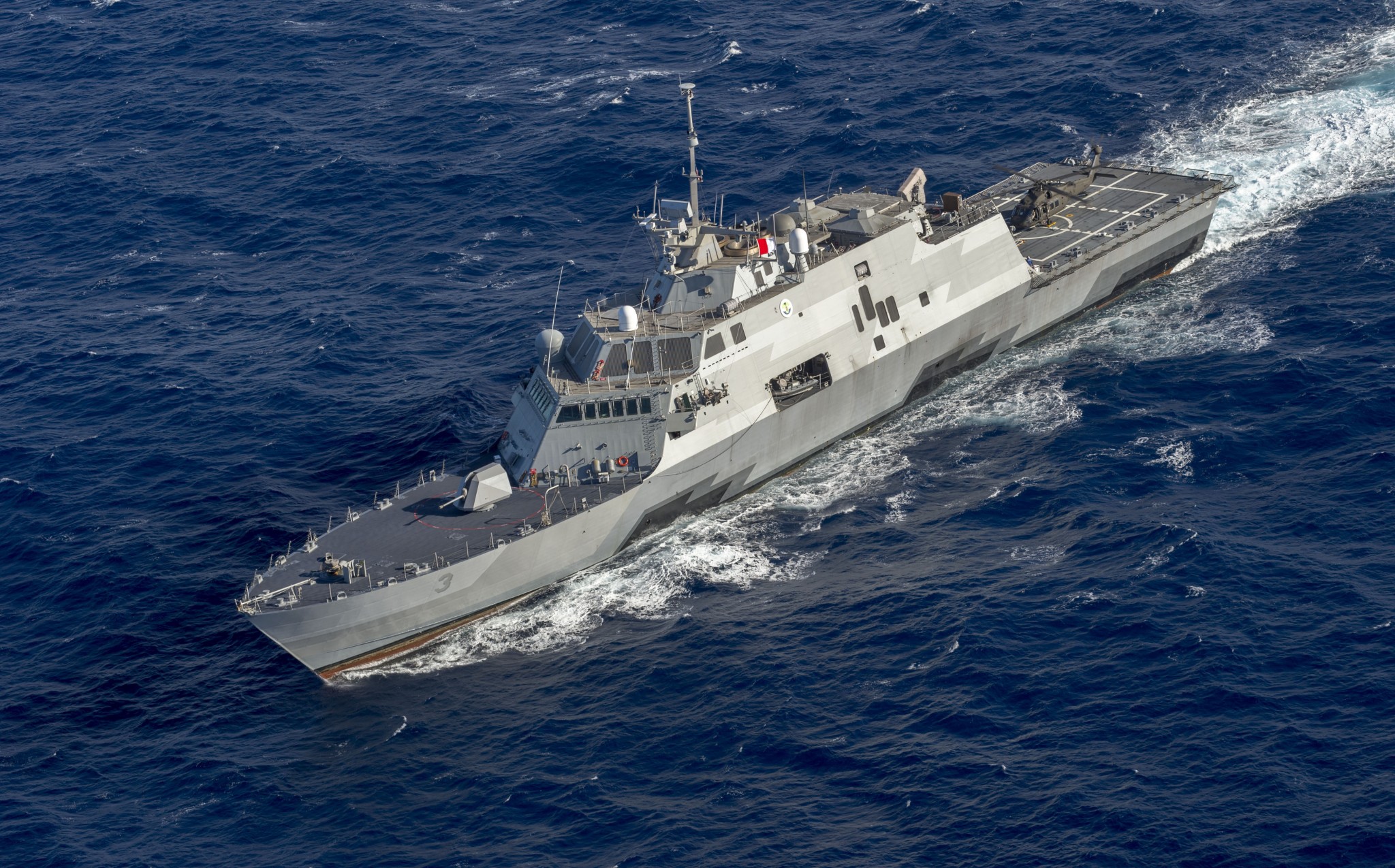(Bloomberg) -- The Fort Worth, the third littoral combat ship deployed by the U.S. Navy, suffered “extensive damage” during the botched maintenance procedure in January that’s left the crippled vessel sidelined in Singapore ever since, according to the service’s top weapons buyer.
A Navy team has been examining the vessel built by Lockheed Martin Corp. since the January 12 incident, when gears that propel the ship were damaged, Assistant Navy Secretary Sean Stackley said in Washington. An investigation is continuing into the failure that’s thought to have been caused by crew error rather than a design flaw.
“What they are finding is that the damage is pretty extensive,” with debris scattered through the primary propulsion system, Stackley told reporters after a congressional hearing on Wednesday, in the service’s most extensive comments on the issue. “We’re weighing the choice between repairing it in theater or repairing it at home.”
While the Navy said last week that the damage to the Fort Worth led it to relieve the vessel’s commander of his post, Defense Secretary Ash Carter and Navy leaders haven’t mentioned the setback publicly or been asked about it. Instead, they have praised the program’s importance. The Fort Worth was on a 16-month deployment to Asia as proof of the Navy’s “rebalance” to the Pacific.‘Terrific Deployment’
The Fort Worth “has just had a terrific deployment to the Pacific,” Navy Secretary Ray Mabus said during a House Defense Appropriations subcommittee hearing on March 1, without noting that it’s been sitting immobile in port.
Critics of the littoral combat ship, made in two versions by Lockheed and Austal Ltd., have questioned whether the light vessel designed for shallow coastal waters could survive an attack. Carter and his predecessor, Chuck Hagel, have cited that concern and budget priorities in cutting back the planned fleet to 40 from an initial 52.
The Fort Worth’s damage was to combining gears that let the ship run on a mix of diesel and gas turbine engines.
Initial indications were that the damage “appears to be caused by a failure to follow established procedures during maintenance,” according to a Jan. 21 Navy memo. “During startup of the main propulsion diesel engines, lube oil was not supplied to the ship’s combining gears.”
Now, Navy personnel must open up the damaged section and flush out its lubrication system “over a long period of time,” Stackley said. “It’s not going to be a quick flush.”
After that, the service must determine “how extensive is the damage — therefore how extensive is the repair?” Stackley, said.
The Navy also needs to determine whether to repair the vessel in Singapore or in a U.S. port after coming home on its two undamaged gas turbine engines, Stackley said.
“If the decision is to repair it back home, then we’ve got to get the ship in the condition to drive it back,” Stackley said. A heavy-lift vessel could transport it, he said, “but you always want to come home on your own power.”





